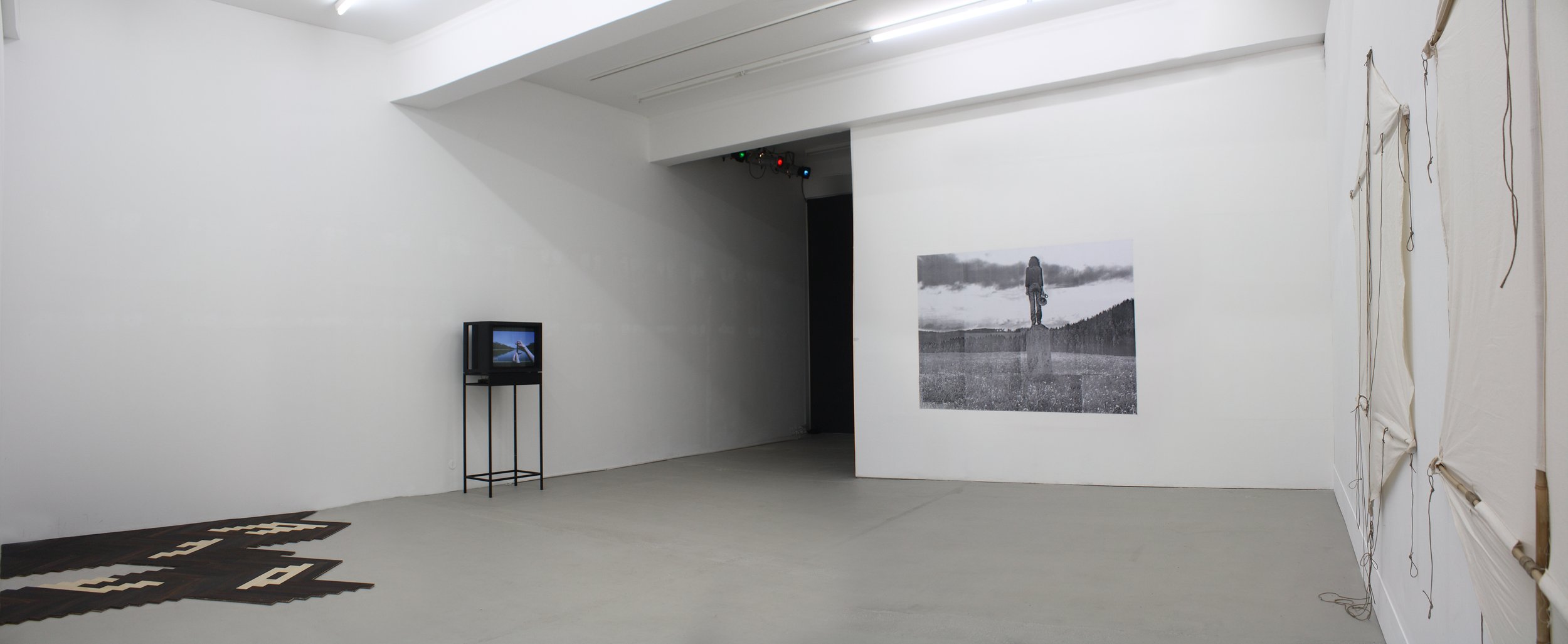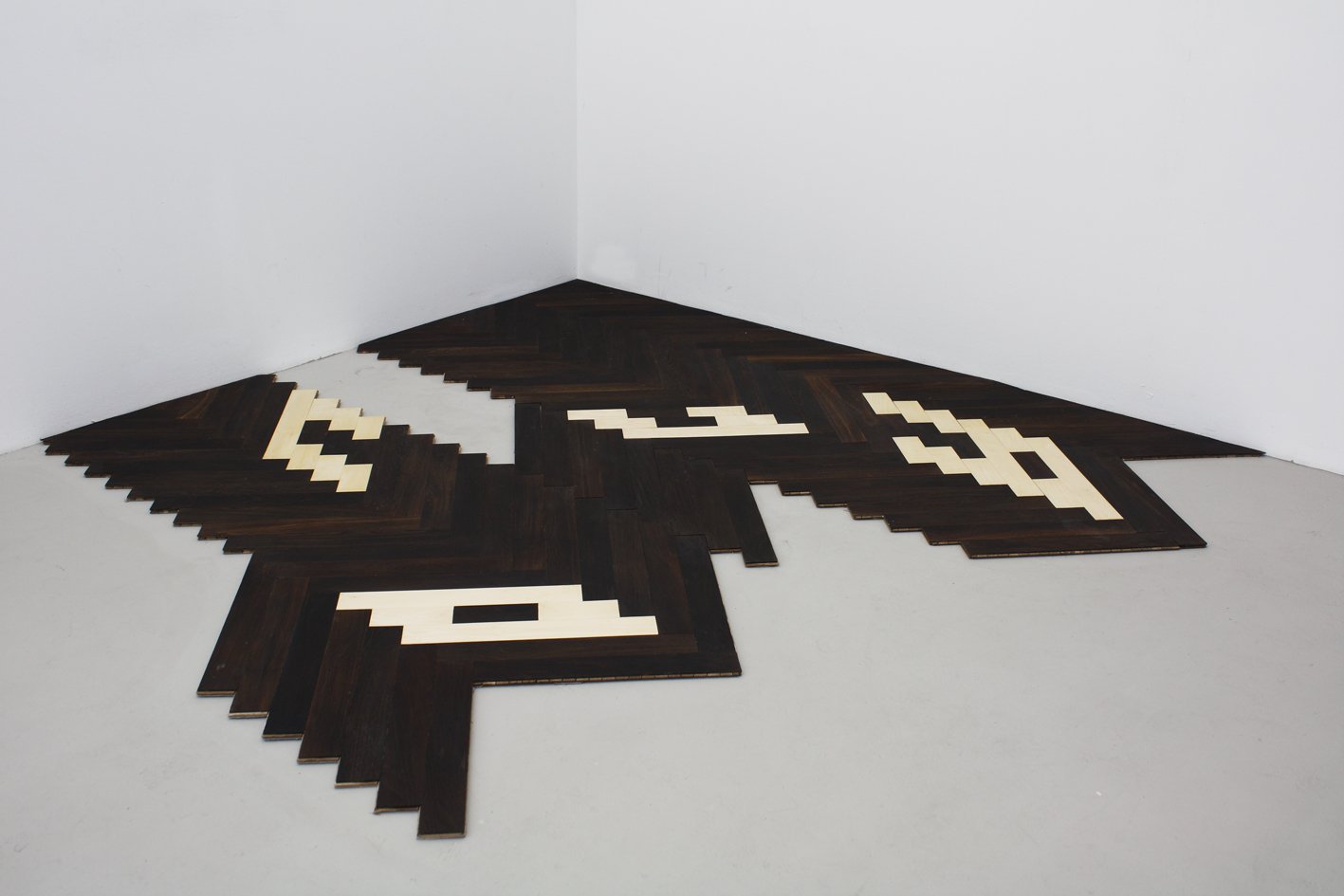
SCHLEICHER/LANGE BERLIN
MERIS ANGIOLETTI, MARIA LOBODA, LAURENT MONTARON, AMALIA PICA: CODED TRANSMISSION
28 April, 2012 - 26 May, 2012










-
In their new exhibition, SCHLEICHER/LANGE Berlin presents a group show about the principle of coded messages or codes. Coded Transmission features works by Meris Angioletti, Maria Loboda, Laurent Montaron, and Amalia Pica. These works not only embody various artistic methods and techniques, but each shows a unique approach to the subject. The show combines a projection, a floor sculpture, an installation, a video and a wall work. They all deal with encoding messages used various kinds of coding. They touch upon basic foundations of our human communication, the rules and limitations according to which human exchange functions.
Codes are what make signification and interpretation possible. While Meris Angioletti is interested in our imaginative power in viewing a blank image, Maria Loboda explores the code of the Chinese horoscope I-Ching. In his installation, Laurent Montaron reconstructs one of the first experiments in transmission using kites, and Amalia Pica shows a reproduction of many fragmented messages.
The installation “The Curious and the Talkers” by Venice Biennale artist Meris Angioletti is a combined light and sound installation. Embellished with car noises, birdsong, etc., a spoken soundtrack reminiscent of the sci-fi radio serials from the 1940s and 1950s offers a conversation between a man and a woman punctuated by a narrator’s remarks about light and remote viewing. This sound work is accompanied by an “empty” projection of the colors red, green, and blue whose overlaying creates white light; this cinema without images harks back to Gene Youngblood’s “expanded cinema” of the 1970s, which pushed back the boundaries of the seventh art and contributed to an expansion of consciousness. Meris Angioletti’s research into the connections between light, art and telepathy led her to question Ingo Swann, the founder of remote viewing—a semi-esoteric, semi-scientific technique of seeing at great distances— about the possible links between his method and the creative process. This was followed by phone conversations and weekly meetings in New York in 2010. The result is a “screenplay” spoken by two actors, to which the artist has added a narrator quoting the ideas of Thomas Wilfred and Claude Bragdon, founders of the Art Institute of Light in New York in 1930, the first-ever center for the study of light, perception, and consciousness-expansion. This was the site for Wilfred’s vast project Lumia: the Art of Light, comprising recording facilities, physiology laboratories, dance studios, a chromotherapy clinic, and a concert and projection hall. Its combination of sound and light makes “The Curious and the Talkers” a potential space for the projection of mental images, out of which arises a new language generated by the imagination and memory.
In Maria Loboda’s “What Will Happen?” (2007), the title is the key to understanding the work, for one of the most powerful relationships to the future is prophecy. Here, fortune telling is understood as a science of being able to read symbols and thus to receive instructions for future actions. Assembled using wood parquet in shades of light and dark, signs are created in the floor that are based on the symbolic language of the I-Ching, one of the world’s oldest systems of divination (from the Han Dynasty, 206–220 BC). Each time the work is installed, the artist asks the I-Ching for a possible answer to the question, “What will happen?” The encoded answer is then assembled before the eyes of the visitor to the exhibition in the symbolic language of the I-Ching. Maria Loboda’s work is an enigma, a cryptic form that anticipates the question. One stands before the work and asks, what does this mean? And in this very moment, one is part of the future, for there is a relationship with the other side. An additional work by Maria Loboda is the 2012 video „The Messenger (Be Aware of the One Who Appears Not to Be Moving)“. It dissects its message into its individual components, the letters. They are held up one after another against a landscape. This dissection makes it difficult to understand the message, although there is no text coding in a classical sense. The generation of meaning takes place through simple spelling, that is, the reduction of language — and hence meaning itself — to the lowest common denominator, the letter, and the playful exploration of possible interpretations. The loop in which the work is shown complicates matters still further, for it is no longer clear where the words and thus the message ends and where they begin.
The work “The Invisible Message” (2012) by Laurent Montaron is based on the rediscovery of one of the first experiments in cableless communication, which he recreates as a wall sculpture in the gallery. In October 1866, Mahlon Loomis (1826–1886) claimed to have been able to send signals through the air between two of the Blue Ridge Mountains in Virginia fourteen miles apart from one another using two kites. With the help of natural static electricity in the air and a cooper wire attached to each kite that was anchored at the other end to a mast in the ground, each kite became an antenna. The experiment consisted in installing a transmitter/receiver system. The people who carried out this experiment set their clocks and broadcast a signal at prescribed intervals, by connecting the wire to the floor. The receiver observed the motion of the needle of a Galvanometer that was placed between the wire and the ground of the second kite. The first cableless transmission without an independent observer was not just the discovery of radio waves, but also crossed an unseen threshold to modernity.
Amalia Pica’s wall work “Sorry for the Metaphor #2” (2009) consists of several DIN-A3 copies. An image only results when the reproduction of fragmented messages is entirely finished and installed. But the situation shown on the wall work is nonetheless hopeless: in the middle of an empty landscape a woman stands on a slightly raised rock with only a megaphone in her hand. Yet far and wide there is no one to be seen that could be communicated with.